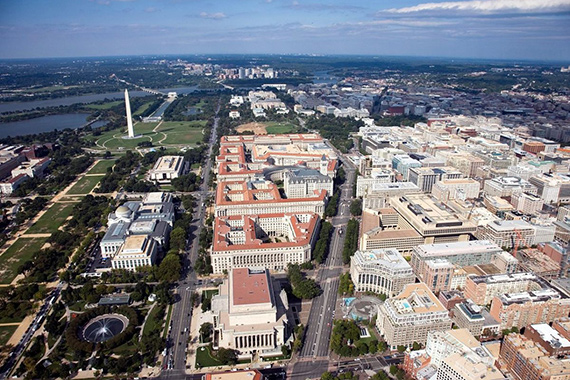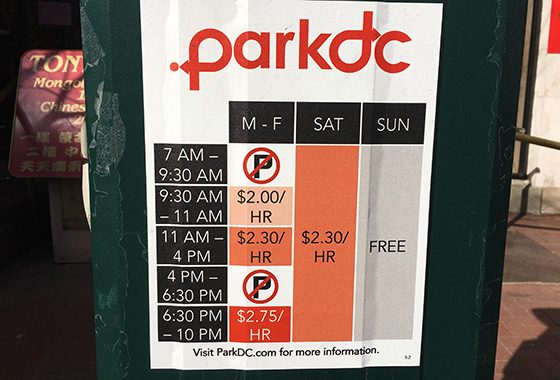OVERVIEW

ParkDC is an initiative by the District Department of Transportation (DDOT) to manage and regulate the District’s curbside and parking assets. Parking meter rates are adjusted quarterly in the Penn Quarter and Chinatown neighborhoods as part of a performance parking program to improve parking availability through demand-based pricing.
FEATURES

- The parkDC pilot sought to use sensors, artificial intelligence, pricing, and real-time information to make parking easier and reduce congestion in part of downtown Washington, DC.
- The parking meter rate adjustment is part of a project to improve parking availability through demand-based pricing. Approximately 1,000 on-street parking spaces in the Penn Quarter and Chinatown area are now clearly numbered, with new payment kiosks and no need to display receipts on dashboards.
- For spaces in the pilot area, parking meter rates on individual block faces will be adjusted to one of twelve prices: $1.00/hour, $1.50/hour, $2.00/hour, $2.30/hour, $2.75/hour, $3.25/hour, $4.00/hour, $4.75/hour, $5.50/hour, $6.00/hour, $6.50/hour or $7.00/hour. Prices are also different depending on the time of day. On weekdays, there are three periods: 7 am – 11 am, 11 am – 4 pm, and 4 pm – 10 pm. On Saturdays, the rates will be the same all day. The maps below show what the prices will be on each block in the study area during each time period.
KEY RESULTS
- Better information, viable occupancy detection, and demand-based pricing has helped to reduce parking congestion downtown.
- Parking availability increased in high demand areas and empty spaces were utilized. At the beginning of the pilot, 62% of block spaces had the desired level of usage which increased to 72%.
- Data proved pricing plays a big part in parking demand. By increasing time limits and lowering prices in low-demand areas, occupancy went up 12% and length of stay increased by 14 minutes.
- Parking customers reported a 7-minute decline in the time it took to find parking.
- A connection has been made between roadway congestion and curbside management. As the supply of parking spaces opened up, circling, illegal parking, and double parking decreased.
- Due to the success of the pilot, DDOT is currently working to expand demand-based parking pricing to other District neighborhoods.
RESOURCES
RELATED POSTS
| YEAR | Number of Appointments per year |
|---|---|
| 2011-2012 | 2.3 million |
| 2013 | 33.5 million |
| 2014 | 56.9 million |
| 2015 | 63 million |
| 2016 | 63.4 million |
[/asvc_table]
Back to top

